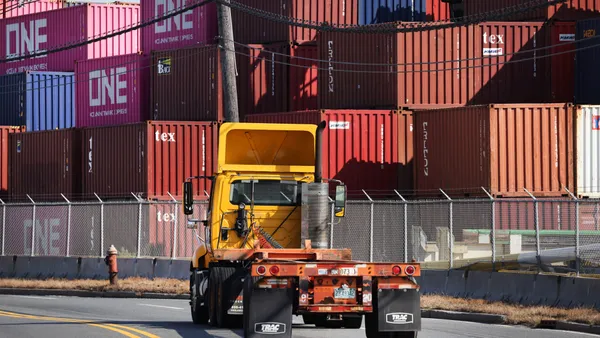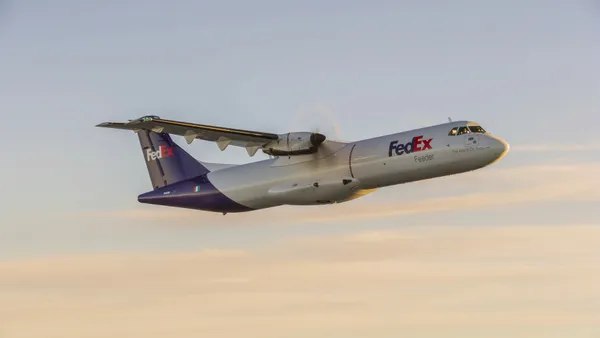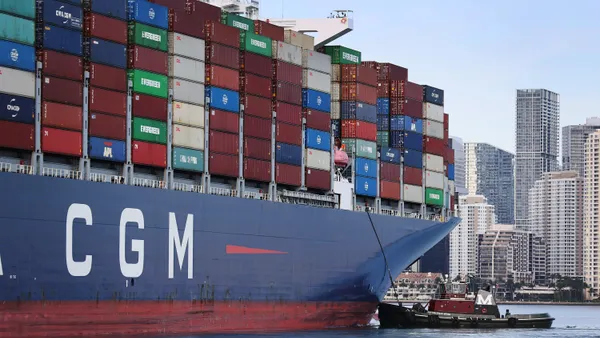Dive Brief:
- Xeneta projects a 4% to 6% year-over-year increase in 2025 global air cargo demand, outpacing available cargo capacity, according to a Jan. 9 report.
- But proposed higher tariffs under the Trump administration, ongoing geopolitical tensions, a soft manufacturing outlook and possible possible changes to the U.S. de minimis threshold could prompt rate and market fluctuations.
- Since the market cannot rely on historical trends for purchasing decisions, “embracing more flexible freight rate negotiation methods, such as indexing or transparent pricing, could foster mutual understanding and better collaboration across the industry this year,” said Chief Airfreight Officer Niall van de Wouw.
Dive Insight:
Last year wrapped up with a 14th consecutive month of double-digit demand growth, with December volumes climbing 11% year over year, Xeneta reported. Global spot rates during the month stood at $2.99 per kilogram, up 15% YoY. Compared to the same period in 2023, December saw the slowest growth rates pricing-wise in seven months.
China-to-U.S. rates didn’t measure up to 2023’s peak season highs in December, possibly attributed to increased scrutiny on the corridor and the strategic allocation of capacity. Instead, those rates in early January were down 9% from its mid-December 2024 peak of $5.61 per kilogram. E-commerce scrutiny, strategic cargo capacity allocation and possible frontloading over possible Trump tariffs may have dampened rates on the China-U.S. corridor.
Source: Xeneta
Contract trends are also changing. In 2024, shippers preferred longer-term air freight contracts of a year or longer, according to Xeneta. During the same timeframe, freight forwarders negotiated nearly half of their volumes in the spot market, which negatively affected revenues due to higher air carrier rates.
Meanwhile, the possibility of another round of strikes at East and Gulf Coast ports didn’t significantly push the pendulum on modal shifts from ocean to air freight in December, per the report. The tentative six-year agreement between the International Longshoremen's Association and the United States Maritime Alliance reached Jan. 8 only further curbed concerns of a spike in air cargo activity. The three-day strike in October only pushed volumes up 12% from Europe to the U.S., compared from the month prior.
However, further disruptions in ocean freight may still prompt shippers to turn to air cargo for greater predictability, Xeneta reported.
What 2025 has in store for the air cargo market remains a “guessing game for many less informed market players,” said van de Wouw.
“Will January 2025 be the first time in 14 months we won’t see double digit growth?” he asked. “At the start of last year, the answer would most likely have been affirmative, but now the market must wait and see what happens because this year is starting off with a much higher base.”














